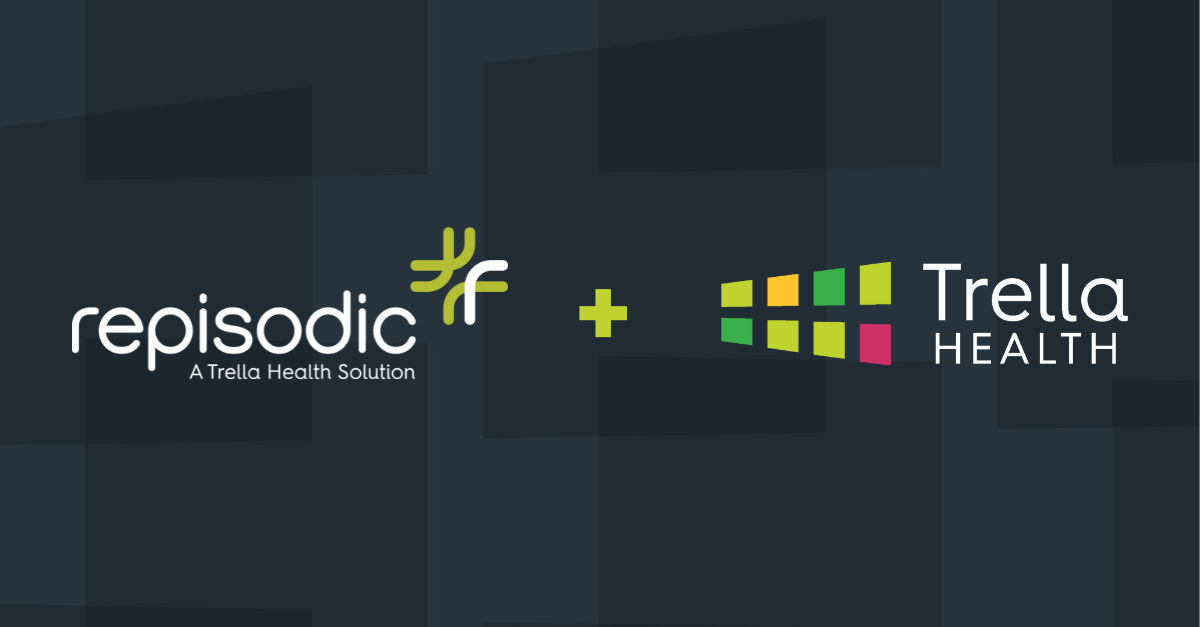As healthcare sales teams face increasing complexity, evolving referral sources, and tighter margins, having a sales leader playbook is no longer optional — it’s essential. A healthcare sales leader playbook provides the structure and strategic direction necessary for sales teams to succeed, scale, and stay aligned with business and clinical goals.
Below are best practices and key takeaways for building and implementing a successful sales leader playbook, based on insights from a recent webinar, The Sales Leader’s Playbook: Leveraging Metrics & Cadence for Competitive Advantage.
1. Make the Healthcare Sales Playbook Data-Driven
 Best Practice: Build your playbook around objective sales data, not just anecdotal success stories.
Best Practice: Build your playbook around objective sales data, not just anecdotal success stories.
High-performing sales professionals rely on a data-driven approach to understand market dynamics and make informed decisions. Your playbook should integrate reliable data sources, including referral patterns and healthcare market intelligence.
For example, use historical conversion rates data to set realistic expectations for sales calls to conversion ratios. Apply referral source analytics to identify top targets and align sales efforts with the highest-opportunity accounts. Incorporate regional benchmarks so sales reps understand how their territories compare to others.
Key Takeaway: A data-driven playbook enables sales representatives to prioritize the right accounts, personalize their messaging, and ultimately drive more referrals. It transforms subjective selling into a repeatable, scalable process.
2. Align Clear Goals and Performance Metrics
Best Practice: Create a structure for performance that includes both leading indicators (activities) and lagging indicators (results).
Too often, healthcare go-to-market leaders focus exclusively on quota attainment, ignoring the inputs that drive success. A robust sales playbook breaks down the full sales process, from outreach to referral, into measurable KPIs. These include the number of calls made, appointments booked, follow-ups completed, and referrals secured.
This level of visibility not only helps representatives stay focused but also empowers managers to intervene early if performance dips. Sales representatives can self-assess progress and adjust sales tactics proactively.
Key Takeaway: When your playbook sets clear, actionable performance expectations, it builds transparency, accountability, and momentum within your sales teams.
3. Accelerate Onboarding with Customizable Plans
Best Practice: Use your playbook to reduce onboarding time and tailor the experience to each representative.
Onboarding is one of the most critical windows in a sales representative’s tenure. A structured onboarding plan inside your playbook ensures new hires ramp quickly and consistently. Best practices include
- Outline what they need to accomplish in their first 30, 60, and 90 days
- A checklist of required training modules, call shadowing sessions, CRM setup tasks, and milestone activities
Beyond the standard content, customize onboarding for each sales representative. If a new hire has strong clinical knowledge but limited sales experience, emphasize prospecting and objection handling. If they’re a seasoned seller but new to the healthcare space, focus on payer mix, referral sources, and care delivery models.
Key Takeaway: A customizable onboarding section in your sales playbook increases confidence, reduces turnover risk, and helps representatives become productive faster.
4. Reinforce Best Practices Through Coaching
 Best Practice: Treat the playbook as a live coaching tool, not just a static training manual.
Best Practice: Treat the playbook as a live coaching tool, not just a static training manual.
The best sales leaders use the playbook as a foundation for ongoing coaching, not just a document to review during onboarding. Use it in 1:1 meetings to assess progress, troubleshoot barriers, and reinforce sales techniques. Revisit sections on territory planning, qualification criteria, or messaging frameworks during coaching sessions to keep learning active.
Incorporate real field examples into the playbook over time. By highlighting recent customer wins, deal breakdowns, and competitive scenarios, sales representatives are offered a teachable moments that can help further refine current sales strategy. Pair this with individual performance data to identify skill gaps and development opportunities.
Key Takeaway: When your playbook is part of regular coaching and continuous learning, it strengthens team alignment, elevates sales skills, and supports professional growth.
5. Integrate Data Analytics Thoughtfully
Best Practice: Use tools that streamline sales processes and enhance the playbook experience without adding complexity.
The best sales enablement platforms support your playbook instead of replacing it. Here are some ways industry-specific tools can help enhance the use of the sales playbook:
- Integrate your CRM to track rep performance, automate lead assignment, and measure activity against KPIs defined in the playbook
- Use dashboards to visualize referral trends, territory health, and pacing against goals
- Leverage email templates, call scripts, and market intelligence tools to support reps in real time
- Automate routine reporting so sales leaders can focus on strategy, not data collection
Ensure that every tool in your tech stack serves a clear purpose and is fully aligned with the workflows laid out in the playbook.
Key Takeaway: Industry-specific tools, such as market intelligence or a healthcare CRM, should extend your playbook’s impact, giving reps timely insights and enabling leaders to manage performance efficiently.
6. Encourage Regular Feedback and Iteration
Best Practice: Build a culture of feedback and make it easy to evolve your playbook.
Your playbook should not be written in stone. It should grow and adapt as your team learns from experience. Set up channels for reps to contribute feedback on what’s working and what needs refinement. Consider quarterly surveys or debriefs after large campaigns or market changes.
Create a “What’s New” section in your playbook to spotlight updates and revisions. Share lessons learned from the field, such as messaging that resonates or new competitor tactics. Make your playbook a collaborative tool that reflects team input and real-world evolution.
Key Takeaway: A responsive, rep-informed playbook stays relevant, promotes engagement, and reflects the collective intelligence of your sales team.
How Trella Health Can Support Your Sales Leader Playbook
Trella Health aligns with and enhances each of these playbook best practices by providing insights and tools that make sales strategies more targeted, efficient, and repeatable.
- Market and referral data: Trella Health delivers market intelligence that power informed territory planning, personalized outreach, and data-driven decisions.
- Performance dashboards: Sales representatives and leaders gain visibility into activities, conversion rates, and growth opportunities — enabling effective coaching and real-time adjustments.
- Territory insights: Understand where referral sources are growing or shrinking and align rep focus to the highest-value opportunities.
By using Trella Health as a data partner, healthcare leaders can ensure their sales leader playbook is grounded in market reality and supported by actionable intelligence.
Final Thoughts
A sales leader playbook is more than just a document. It is a framework for alignment, accountability, and sustained sales success. By focusing on data, clarity, coaching, and continuous improvement, sales leaders can empower their teams to exceed expectations and adapt to market changes with confidence.
In a competitive and rapidly evolving healthcare landscape, your playbook is your playbook for success — one that grows with your people, reflects your market, and supports your long-term goals.

















